Abstract
Four handicapped children were taught four positive social-emotional behaviors: smiling, sharing, positive physical contacting, and verbal complimenting, using instructions, modelling, and praise. Rates of these behaviors were shown to increase in four trained subjects using a within-subject multiple-baseline experimental design. The generality of the behavior change was investigated by integrating three untrained subjects with the trained subjects in a setting free of adult-imposed contingencies and through a series of follow-up observations. Three trained subjects evidenced collateral increases in the generalization setting on at least one other behavior when training in smiling was conducted. One trained subject showed generalization session increases for each behavior when training was conducted to increase that behavior. All three untrained subjects demonstrated increased rates of smiling and sharing when interventions were conducted to increase those behaviors with the trained subjects. There was no appreciable generalization of verbal complimenting by either the trained or the untrained subjects. Both trained and untrained subjects generally maintained their increased rates of smiling, sharing, and positive physical contacting across four weeks of follow-up observations.
Keywords: behavioral covariation, collateral change, complimenting behavior, free play, praise, physical contacting behavior, social-emotional behavior, peers, children
Full text
PDF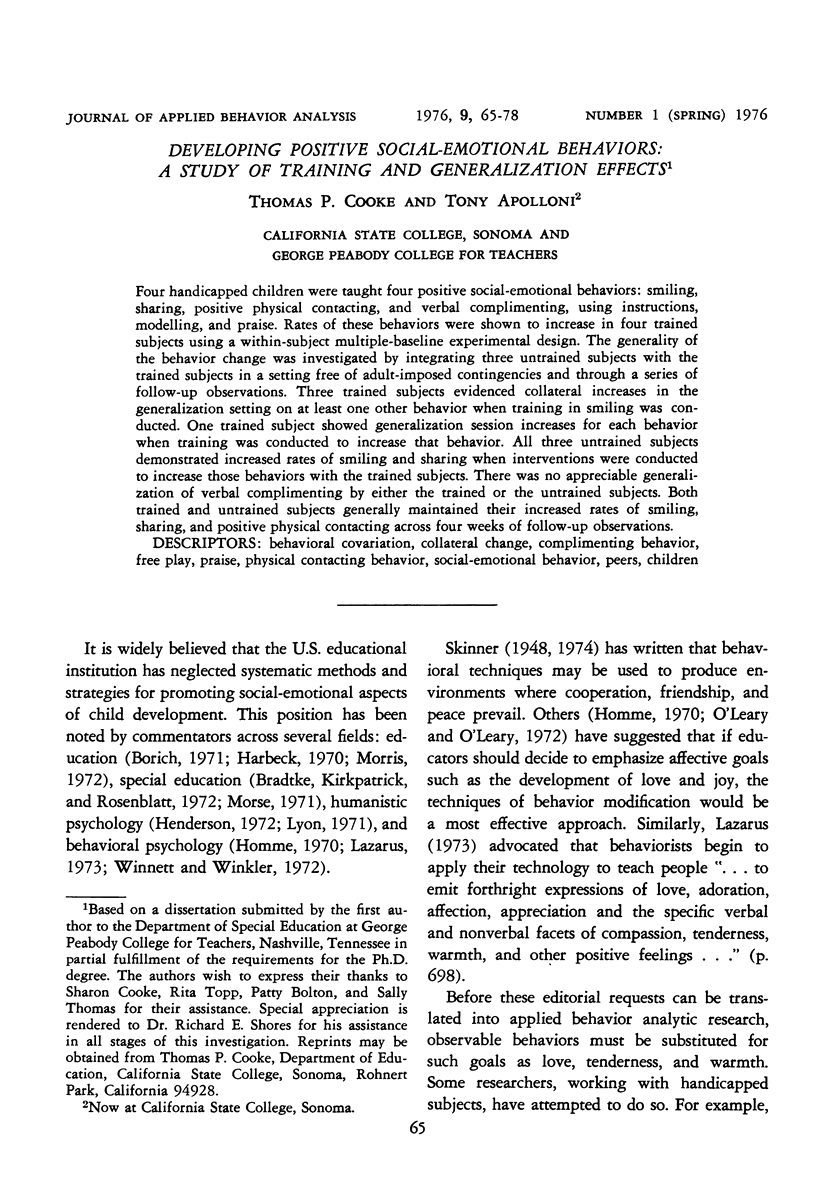
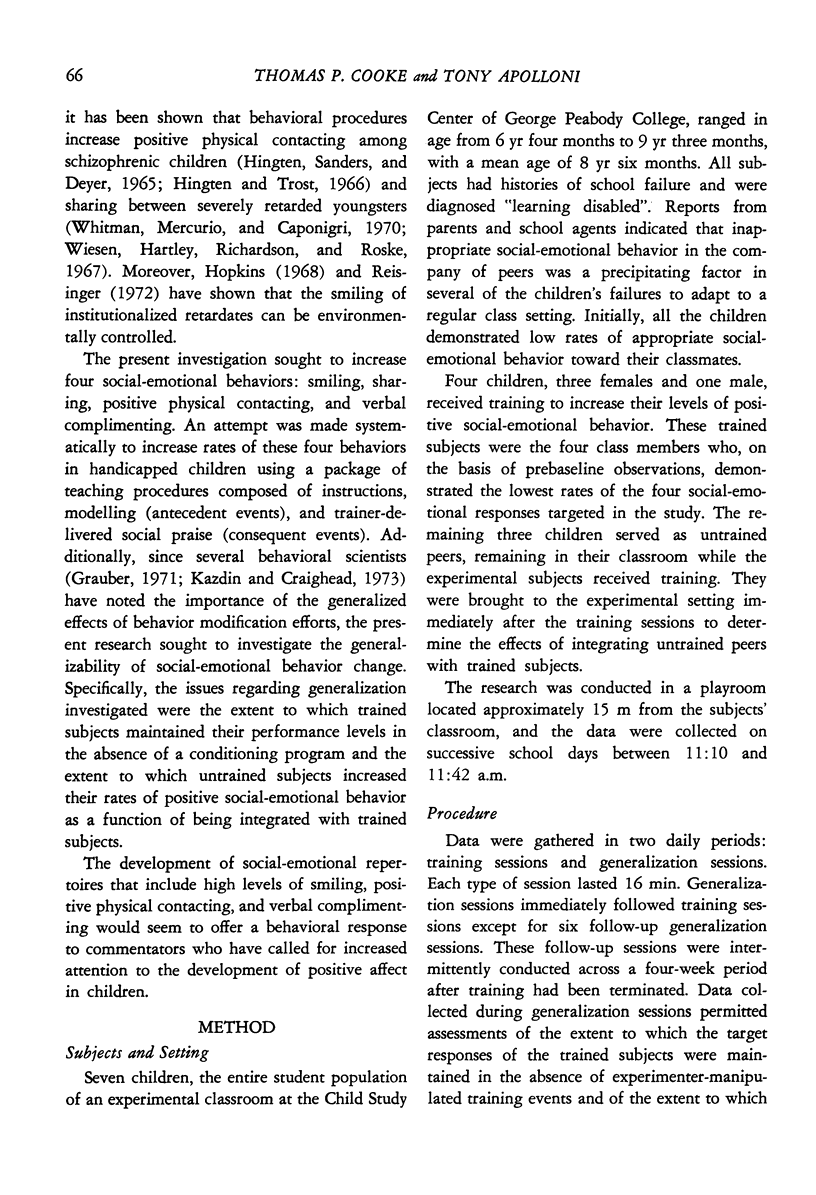
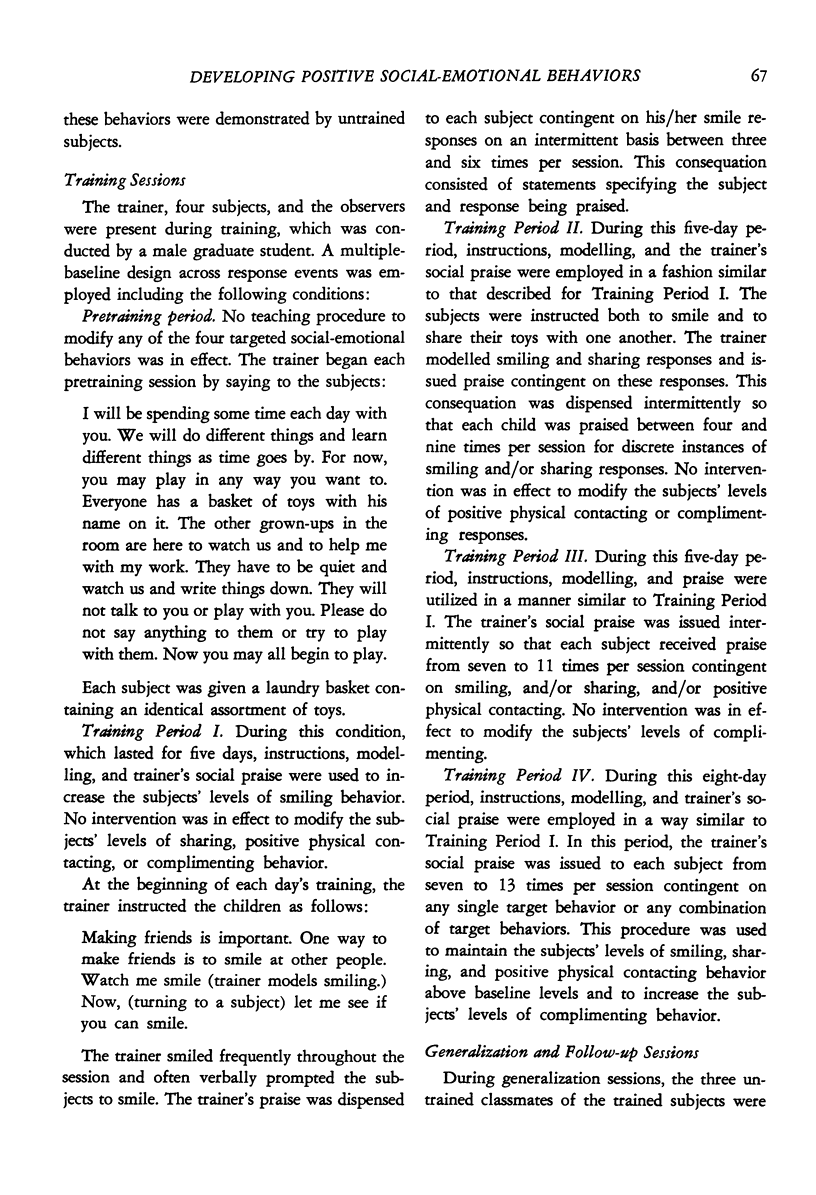

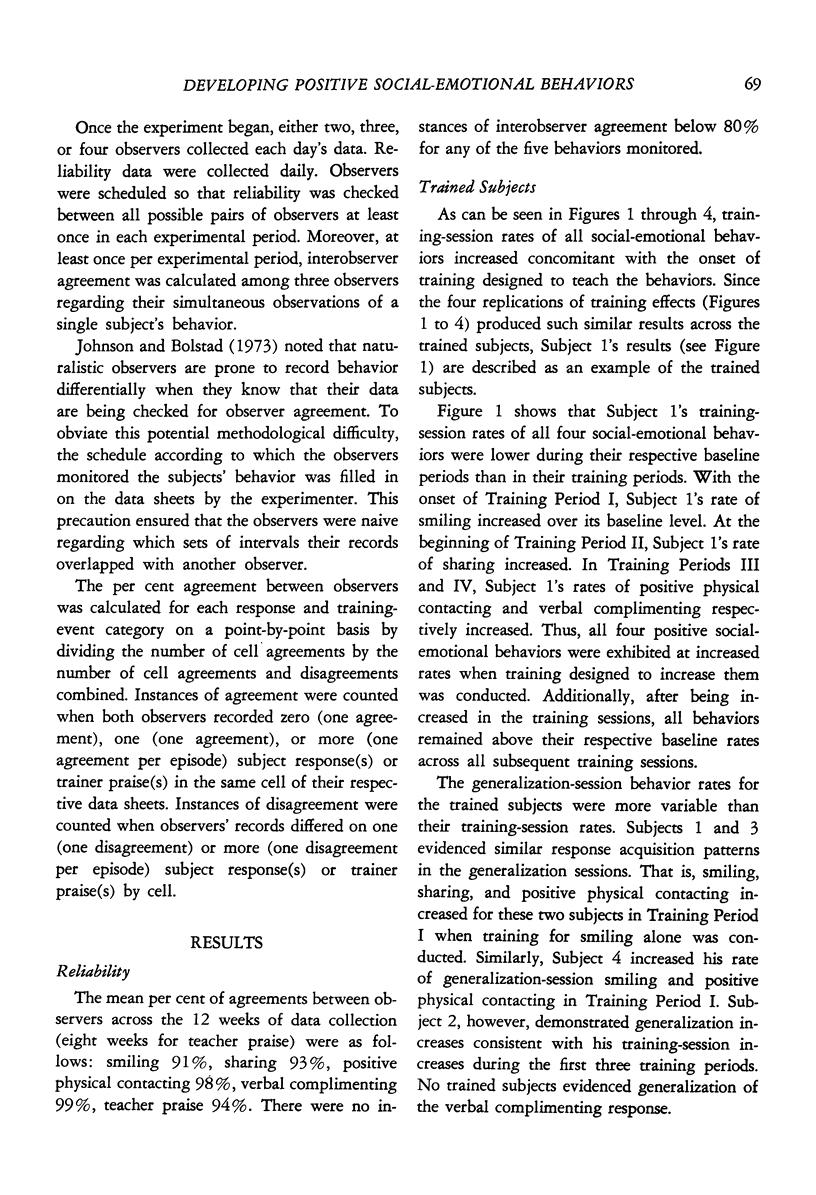
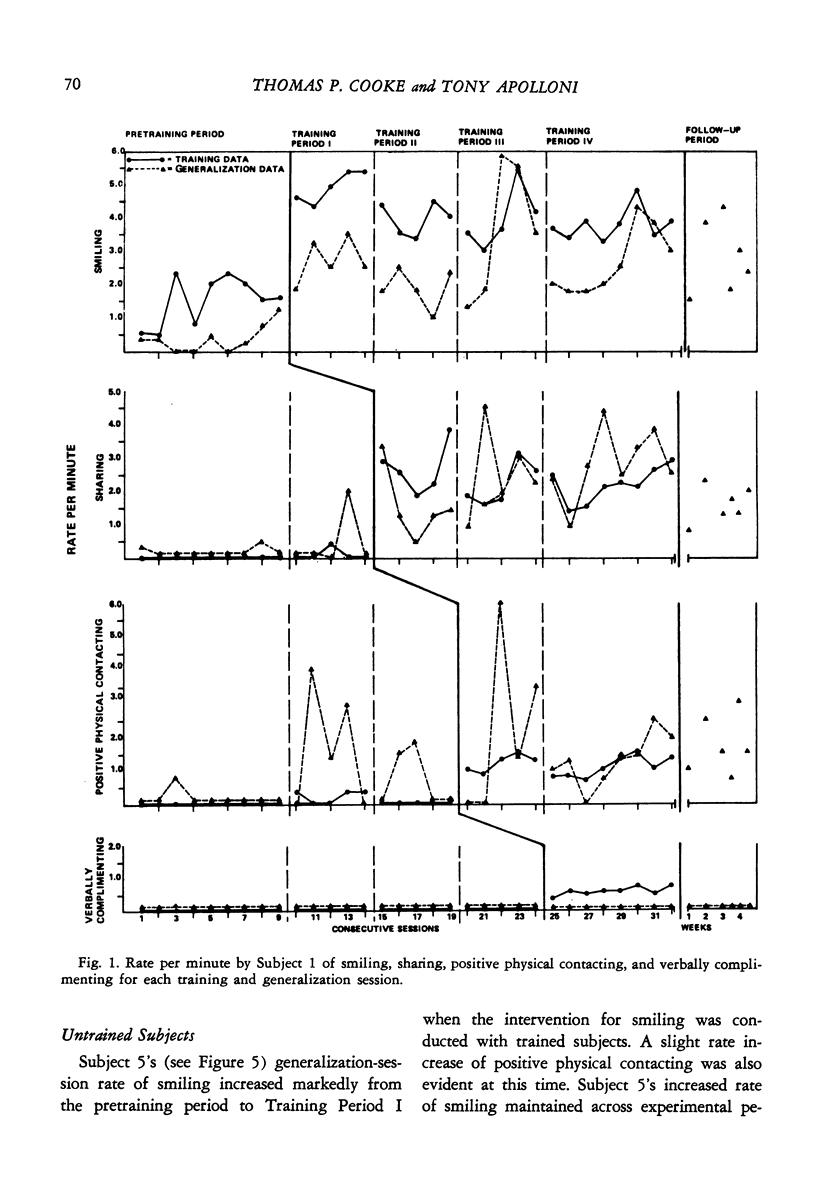
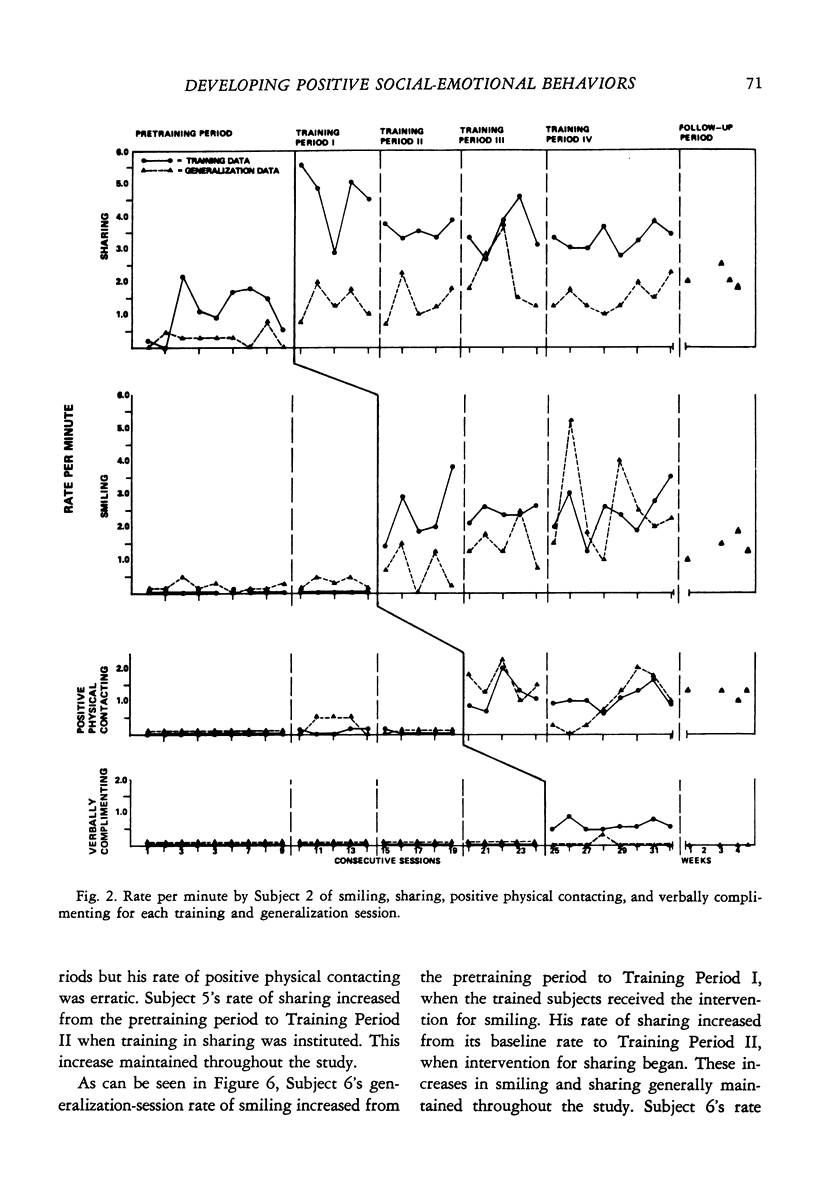
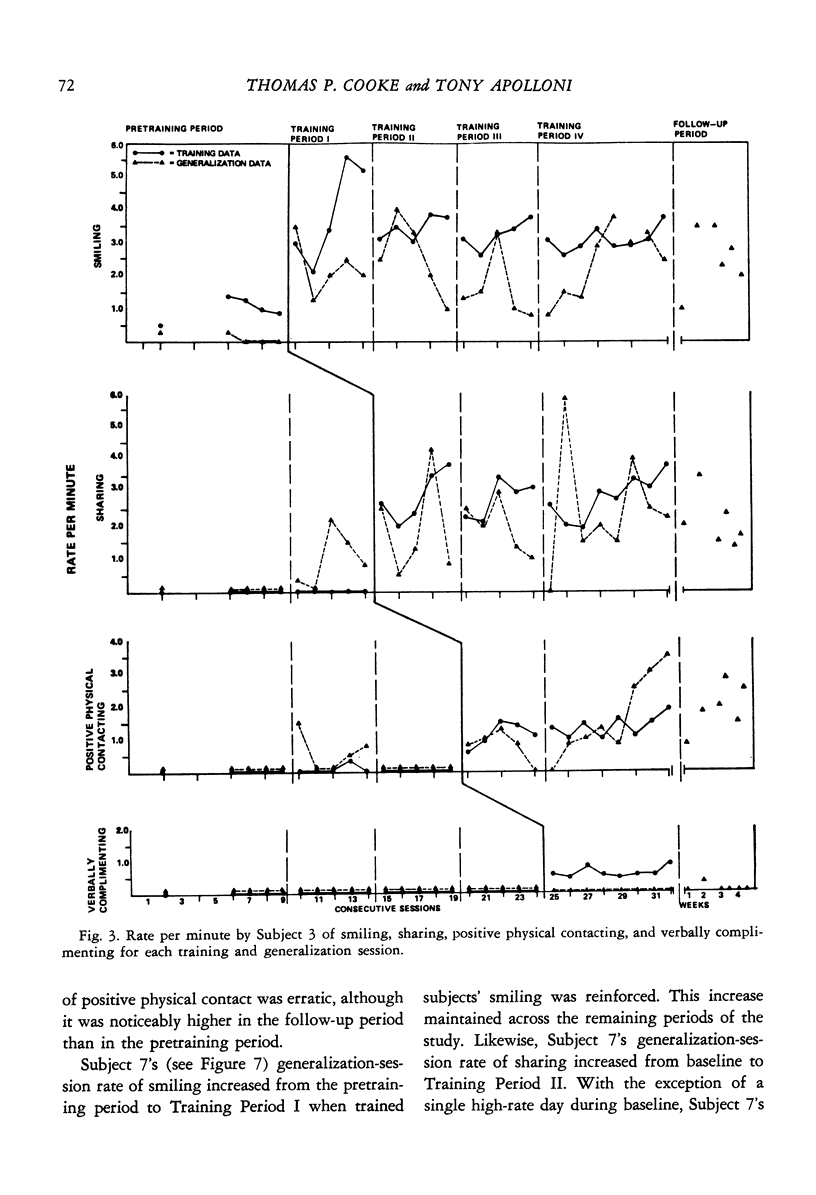


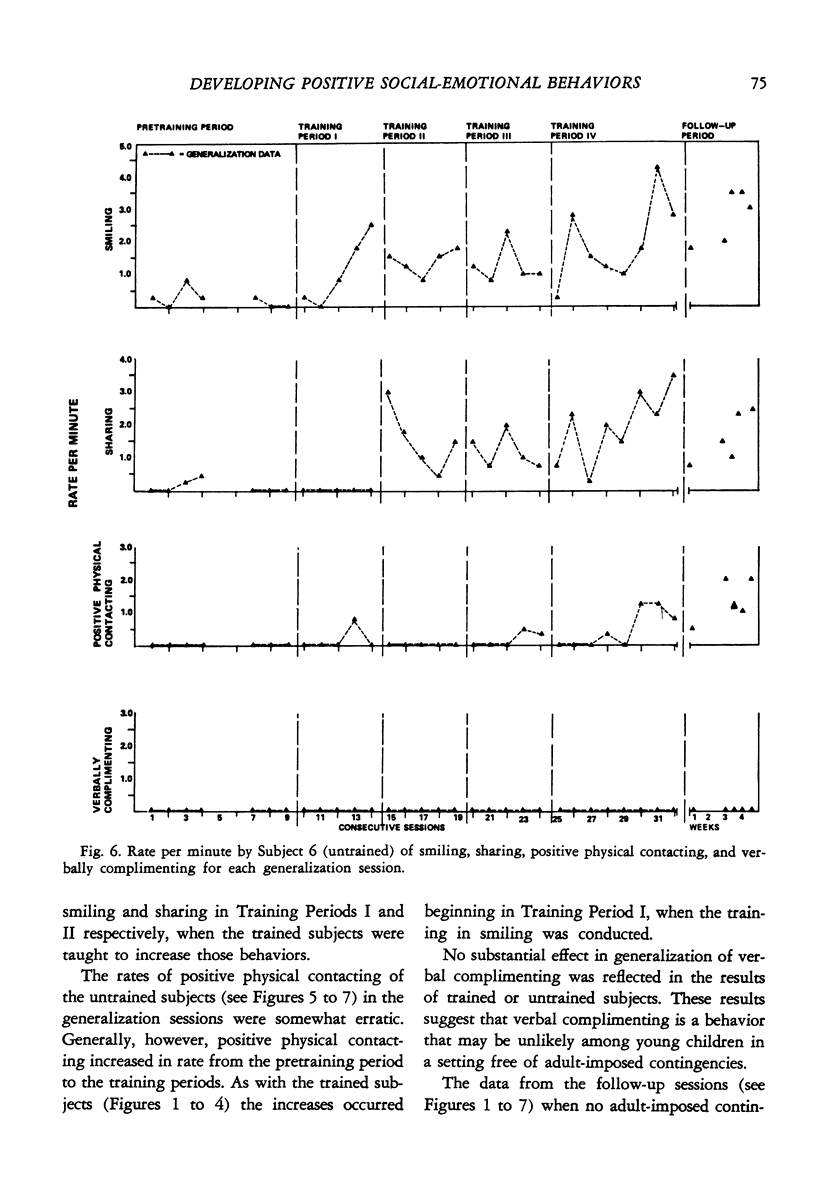

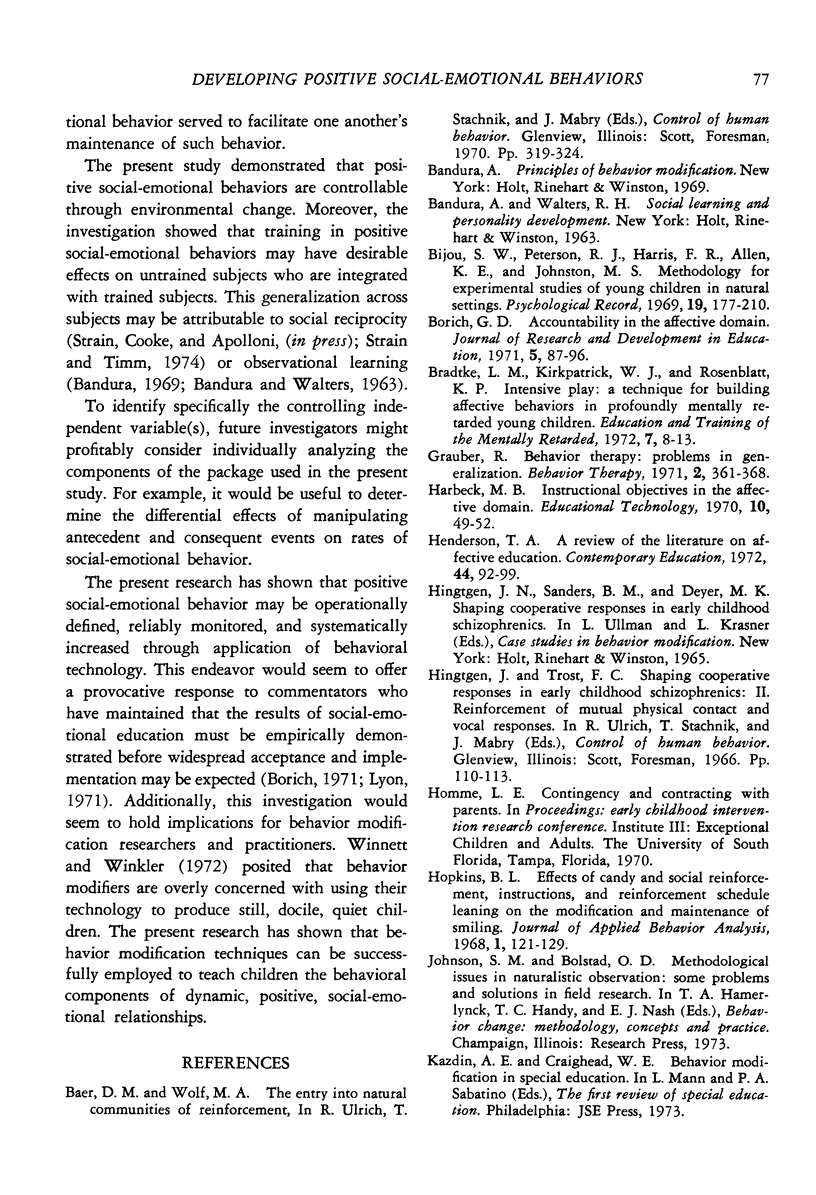
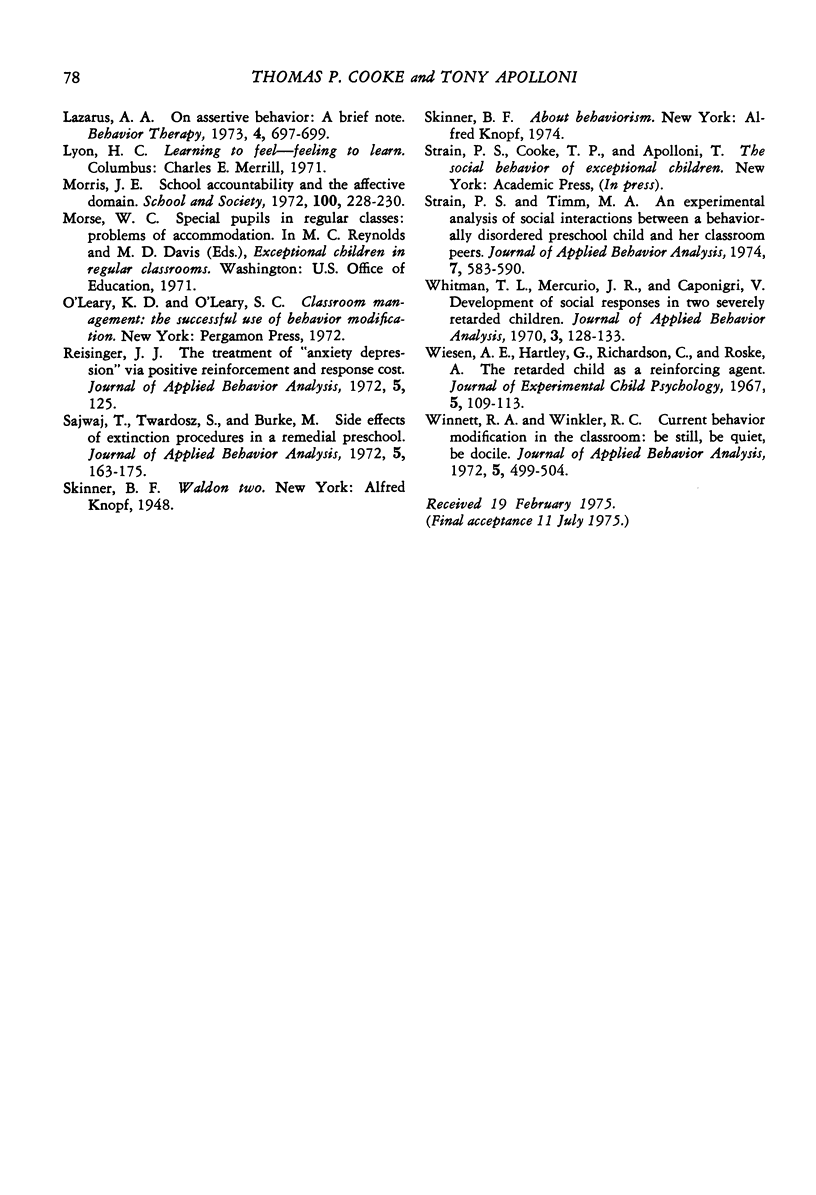
Selected References
These references are in PubMed. This may not be the complete list of references from this article.
- Hopkins B. L. Effects of candy and social reinforcement, instructions, and reinforcement schedule leaning on the modification and maintenance of smiling. J Appl Behav Anal. 1968 Summer;1(2):121–129. doi: 10.1901/jaba.1968.1-121. [DOI] [PMC free article] [PubMed] [Google Scholar]
- Jourdan M. H., Macdonald I., Henderson J. R. The effects of 14C xylitol, given intravenously on the serum-glucose, insulin and lipid concentrations of male and female baboons. Nutr Metab. 1972;14(2):92–99. doi: 10.1159/000175370. [DOI] [PubMed] [Google Scholar]
- Reisinger J. J. The treatment of "anxiety-depression" via positive reinforcement and response cost. J Appl Behav Anal. 1972 Summer;5(2):125–130. doi: 10.1901/jaba.1972.5-125. [DOI] [PMC free article] [PubMed] [Google Scholar]
- Sajwaj T., Twardosz S., Burke M. Side effects of extinction procedures in a remedial preschool. J Appl Behav Anal. 1972 Summer;5(2):163–175. doi: 10.1901/jaba.1972.5-163. [DOI] [PMC free article] [PubMed] [Google Scholar]
- Strain P. S., Timm M. A. An experimental analysis of social interaction between a behaviorally disordered preschool child and her classroom peers. J Appl Behav Anal. 1974 Winter;7(4):583–590. doi: 10.1901/jaba.1974.7-583. [DOI] [PMC free article] [PubMed] [Google Scholar]
- Whitman T. L., Mercurio J. R., Caponigri V. Development of social responses in two severely retarded children. J Appl Behav Anal. 1970 Summer;3(2):133–138. doi: 10.1901/jaba.1970.3-133. [DOI] [PMC free article] [PubMed] [Google Scholar]
- Wiesen A. E., Hartley G., Richardson C., Roske A. The retarded child as a reinforcing agent. J Exp Child Psychol. 1967 Mar;5(1):109–113. doi: 10.1016/0022-0965(67)90082-3. [DOI] [PubMed] [Google Scholar]
- Winett R. A., Winkler R. C. Current behavior modification in the classroom: be still, be quiet, be docile. J Appl Behav Anal. 1972 Winter;5(4):499–504. doi: 10.1901/jaba.1972.5-499. [DOI] [PMC free article] [PubMed] [Google Scholar]


